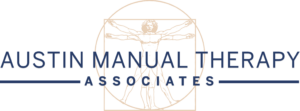
TMJ Dysfunction
Finding Relief For Your TMJ Dysfunction With Physical Therapy
If you are having difficulty chewing or yawning, have jaw pain, or hear a clicking noise when you open and shut your mouth, you could have TMJ dysfunction. Request an appointment with Austin Manual Therapy Associates to find relief for your TMJ dysfunction with physical therapy.
How can I tell if I have TMJ Dysfunction?
Symptoms of this TMJ dysfunction include pain in the jaw, jaw popping, headaches, sore jaw muscles, locking of the jaw, pain in the temple, and earaches. There are many reasons why TMJ dysfunction may develop, but some common causes include misalignment of the teeth, gum chewing, arthritis, teeth grinding, or a jaw injury.
How will physical therapy help with my TMJ Dysfunction?
In some cases, home remedies can be used to treat TMJ dysfunction. Some people respond well to over-the-counter pain relievers, such as Ibuprofen or Aspirin. Applying ice packs directly to the jaw joint can also help relieve pain. You may also find temporary relief through sedative essential oils, such as clary sage or lavender. When home remedies don’t work at providing long-term relief, medical intervention may be necessary. Stronger muscle relaxers or anti-inflammatory medications may be prescribed to manage pain. A jaw specialist may also use a dental splint to keep teeth properly aligned and prevent tooth grinding. Other types of medical treatment include trigger point acupuncture, joint replacement, or a TMJ arthroscopy.
However, if you want to avoid taking pain-relieving medication and use a more holistic approach, physical therapy is perhaps one of the most effective treatments for TMJ dysfunction. At your initial appointment with Austin Manual Therapy Associates, a comprehensive evaluation will be done on your neck, shoulder girdle, and thoracic spine in order to determine if those structures are causing your symptoms. Afterward, one of our dedicated Austin, TX physical therapists will create a treatment plan based on the nature of your symptoms and your specific needs.
Contact Austin Manual Therapy Associates for relief
Our physical therapists are patient-centric and committed to your health, working hard to help you manage and eliminate symptoms. If you are in Austin, TX suffering from the symptoms of TMJ dysfunction, request an appointment at Austin Manual Therapy Associates. Don’t suffer from jaw pain and stiffness any longer.




